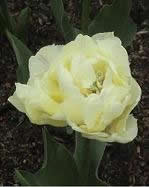Flower Bulb Gardening, a Treasure Chest of Color
The ancient Greeks referred to the hyacinth as “buried treasure”. A flower bulb is like buried treasure. It opens as a precious flower. Cut blooms from bulbs last well in floral arrangements.

Bulbs can grow in shade or full sun. They can be planted in lawns or grassy areas. You can use bulbs in borders during spring. Bulbs look spectacular during spring. It is a dramatic change from the drab winter. They brighten up the whole garden and prepare us for summer.
Grouped bulbs make a great impact in flower beds. They can fill empty pockets in rockeries. Bulbs may be planted indoors or in containers. Bulb flowers look good in window boxes and hanging baskets. Bulb gardening is very versatile.
Selecting and Purchasing Bulbs
There are two different types of flower bulbs. The species are the plants that grow in the wild. Hybrids are obtained by cross-breeding two or more species. There are also varieties within the same genus.
Popular hybrid plant bulbs are cheaper than the species plants. Hybrids are larger and have more vividly colored blooms.
Select only healthy, quality bulbs for planting in your garden. Buy from a reputable supplier. I recommend BloomingBulb. They provide excellent bulbs and service. They have a few special offers:
Fall planting bulbs are 15% off at bloomingbulb.com.
or Subscribe to the free bloomingbulb.com newsletter and save 10% off your first order.
Some popular flower bulbs to select are:
• Daffodils
• Freesias
• Hyacinths
• Ranunculus
• Anemones
• Amaryllis
• Tulips
• Gladioli
Flower Bulb Planting
Bulbs can be planted in many different places. Plant groups of bulbs together (en masse) to make a statement. You may also blend different color shades together. Remember these few guidelines when planting bulbs.
Soil Preparation
Prepare the soil well. Go to our soil preparation page for guidance if needed. Bulbs grow in and adapt to most soil types. Nourish the soil with organic compost, and ensure that the soil drains well.
Wind Protection
Protect the bulbs from strong winds
Water
Water the bed well. Bulbs love water. Watering causes the organic compost to seep in. Water the soil at least 1 week before planting using a fine spray.
Plant spacing and depth
Arrange your bulbs in the bed, spacing them evenly. The bulb planting hole depth should generally 1.5 times the size of the bulb. Plant the bulbs with their pointy sides to the top. This applies to most bulbs.
Warm climate bulbs, such as Amaryllis or Nerine, must have they necks showing above the soil.
Flower Bulb Care
Lifting of bulbs
Bulbs may be left in the soil to flower year after year. These will eventually require lifting. Once lifted, divide the bulbs and replant them. Some hybrid bulbs must be lifted after every season to prevent rot.
Nourishing
Constantly enrich and nourish the soil with organic compost. You can also feed the plants with bulb food or fertilizer. Apart from feeding, they need little attention from the gardener. Bulbs are very rewarding.
Cutting the leaves down
Don’t cut the bulb down when it has finished flowering. The plant still needs to be nourished and watered. Wait until it has completely withered and entered into its dormant period.
The process of photosynthesis continues for as long as the plant remains green. The plant stores the nutrients in the bulb or corm in preparation for the next season’s growth.
Learn the Very Basics of Bulb Gardening for US conditions.
Attention: This is limited to the next 7 lucky individuals
“The FREE Shed Plan and Garden Improvement Project ”







